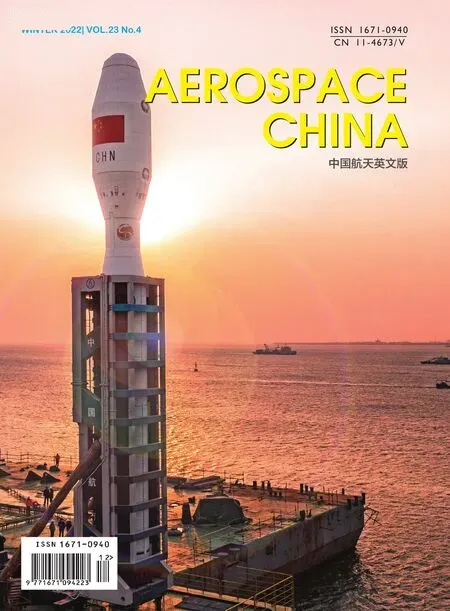Psychological Issues in Simulated Space Missions: What We Learn From Chinese Crew
2022-07-15WURuilinMAQianying
WU Ruilin ,MA Qianying
1 Department of Psychology,Beihang University,Beijing 100083
2 State Key Laboratory of Space Medicine Fundamentals and Application,China Astronaut Research and Training Center,Beijing 100094
3 Beijing Language and Culture University,School of Communication Science,Beijing 100083
Abstract: Inspired by the mysteries of the universe,humans have been exploring outer space since the 1950s.Proceeding from 1-day (Shenzhou 5) to 6-month (Shenzhou 15) missions,one of the perspectives of Chinese space exploration has shifted from not just how to safely survive but to how to healthily live in outer space.In current review,we introduce some common psychological stressors during space missions and how researchers simulate these stressors on the ground firstly.Then,we briefly introduce classic and state-of-the-art measurements and tools used in measuring the mental state of crew members.Self-reporting questionnaires,behavioral observations,and computerized tests are widely used as measurement strategies in this field.We discuss,respectively,how challenging missions negatively and positively affect crew members.As psychological issues are sensitive to individual and cultural backgrounds,we focus on Chinese crew members and potential cultural differences.Finally,we propose some potential future directions this research could evolve based on previous findings.
Key word: space psychology,isolated and confined environment,extreme environment,positive psychology
1 INTRODUCTION
Humans have always been curious about space exploration,and gain inspiration from the universe.Since the 1950s,with the impressive developments in space technologies,human have been able to embark on their space journey.During the initial space exploration,the focus was on how to safely stay in outer space,aiming to avoid lethal environments due to radiation,lack of air,and extreme temperatures for instance.In recent times,the focus has been on how to functionally live and work during space missions.Due to the extreme environments,crew members have to stay in small spacecraft.This means that crew members have to be isolated and confined in narrow chambers with a small and fixed team.This is the reason why space psychology has begun to stand on the stage,with other disciplines,and plays a more and more important role.Space psychology focuses on revealing how crew members psychologically respond and adapt to challenging but also exciting missions and illustrates the trajectories of their adaptations.In this way,researchers can select and give training to the right crew members,support their mental health during missions,and even improve the design of spacecraft habitat,which contributes to mission success.
By accessing the mental state of crew members,researchers found that crew members may express more negative mood states in the isolated and confined environment through both conscious self-reporting,or through unconscious behaviors.After rigorous selection and well-prepared training,crew members normally report a low level of negative moods,and their mood states are stable.However,looking into individual data indicates that individual differences in process of adaptation or coping methods to challenges could be masked by group averages.However,the actual differences in coping strategies could potentially cause interpersonal tensions.Researchers have identified factors,such as different personalities,personal values,various social and cultural backgrounds,and leadership roles,that can affect the individual to adapt and hence impact on group cohesion.Space psychology not only focuses on the negative sides,the concept of salutogenesis is also introduced into this area.Although participating in a long-term mission may encounter a number of psychological stressors,there are some positive aspects to these challenging missions.Crew members adjust their personal values during these missions,and they report they feel more responsible and cherish social relationships with others.
As space psychology begins to play a more and more important role in the area of space exploration,researchers should continue to select,train and support crew members who will participate in future space missions on the basis of experiences we have accumulated until now.Moreover,considering future interstellar missions,researchers should have a better understanding of how long-term and long-distance space journeys will affect the connection between crew member brain functions and psychological states.
2 PYSCHOLOGICAL STRESS IN SPACE AND SIMULATED SPACE MISSIONS
In space,there are physical stressors such as no air,ionizing radiation,and microgravity in the environments that impact the crew members[1,2].Due to these stressors,crew members have to stay in small spacecraft,which leads to some individual and interpersonal psychological stressors.
On the individual level,small and narrow spacecraft could initiate the feeling of life-threatening danger and confinement.Also,being far away from one’s own familiar social network(e.g.,families and friends) could cause feelings of isolation.Additionally,routine work may appear monotonous or feel like high workload.On the group level,crew size depends on the size of the spacecraft.Normally,one crew consists of three people.Fixed and small number of crew members may result in personality,gender,and culture conflicts.Moreover,crew members may encounter different interactions due to different types of leadership within the group,or different types of communications from outside groups (See a more detailed discussion about psychological issues in reference [3]).
All these individual and interpersonal stressors could trigger stress with crew members,which are reflected as,but not limited to,tension,negative mood states,withdrawal or territorial behaviors,and affect displacement[4,5].Of note,these stresses may indicate an attempt by crew members in adapting to extreme environments[5].Therefore,it is important to monitor the stress levels of the crew members.In this way,researchers can draw patterns on how crew members adjust themselves during pre-,during-and post-missions.Based on this,researchers can have a basic idea of when and how to support crew members during adaptation and can recognize early signs of potential abnormal responses.
Due to high costs and rare chances of observation during real space missions,most research is based upon artificial environments making them as close to the space missions environment,which is referred to as simulated experiments[1].There are two main categories for well-controlled simulation studies.Firstly,self-sufficient chambers on the ground are used to simulate the isolated and confined environment in the spacecraft.Secondly,head-down bed rest experiments are widely used to test the effects of microgravity,especially for experiencing microgravity in the long term.These studies are designed for testing psychological issues in space.There are also analog studies that are not specifically designed for space missions but share some common environmental conditions with them,such as Arctic and Antarctic expeditions and marine science missions[5].In this review,we focus on findings from simulation studies as these studies were designed for preparations and pre-validation for space exploration.
There are three Chinese long-term simulation studies,as shown in Figure 1:
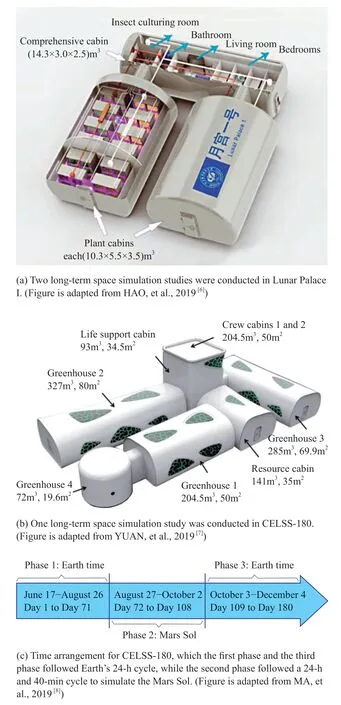
Figure 1 Chinese space simulation studies.
• Lunar Palace I,this is an integrated bio-regenerative life support system,consisting of one comprehensive cabin of 42 m2,and one plant cabin with 58 m2.The comprehensive cabin included 4 private bedrooms,a living room,a restroom,and a room for waste disposal and insect culturing.In Lunar Palace I,two long-term simulation studies were conducted,in which crew members were isolated and confined in it for 105 days and 370 days respectively.
• The Controlled Ecological Life Support System (CELSS-180)consists of four kinds of cabins: the living cabin,biological cabin,life support cabin and resource cabin.The living cabin is mainly used for sleeping,medical examinations,daily work;the biological cabin is used for farming plants;the life support cabin provides food,oxygen and water for the whole crew;and the resource cabin primarily recycles the waste goods and wastewater generated by the whole CELSS integration chamber.Interestingly,in CELSS-180,researchers also tested the effect of different rhythms on crew members.Therefore,the total 180 days were divided into 3 phases.The first phase (Day 1 to Day 71) and the third phase (Day 109 to Day 180) followed Earth’s 24-h cycle,while the second phase (Day 72 to Day 108) followed a 24-h and 40-min cycle to simulate the Mars Sol.
3 ASSESSMENT TOOLS FOR PSYCHOLOGICAL STRESS
Monitoring how crew members adapt to challenging extreme environments is critical.There are various assessment tools to measure and evaluate this process of adaptation.Here we list commonly used methods (Figure 2).Considering the primary aim of crew members is in executing missions,too invasive (e.g.,taking blood tests frequently) or too complicated (e.g.,a magnetic resonance imaging or an electroencephalogram test)tests would not be ideal.
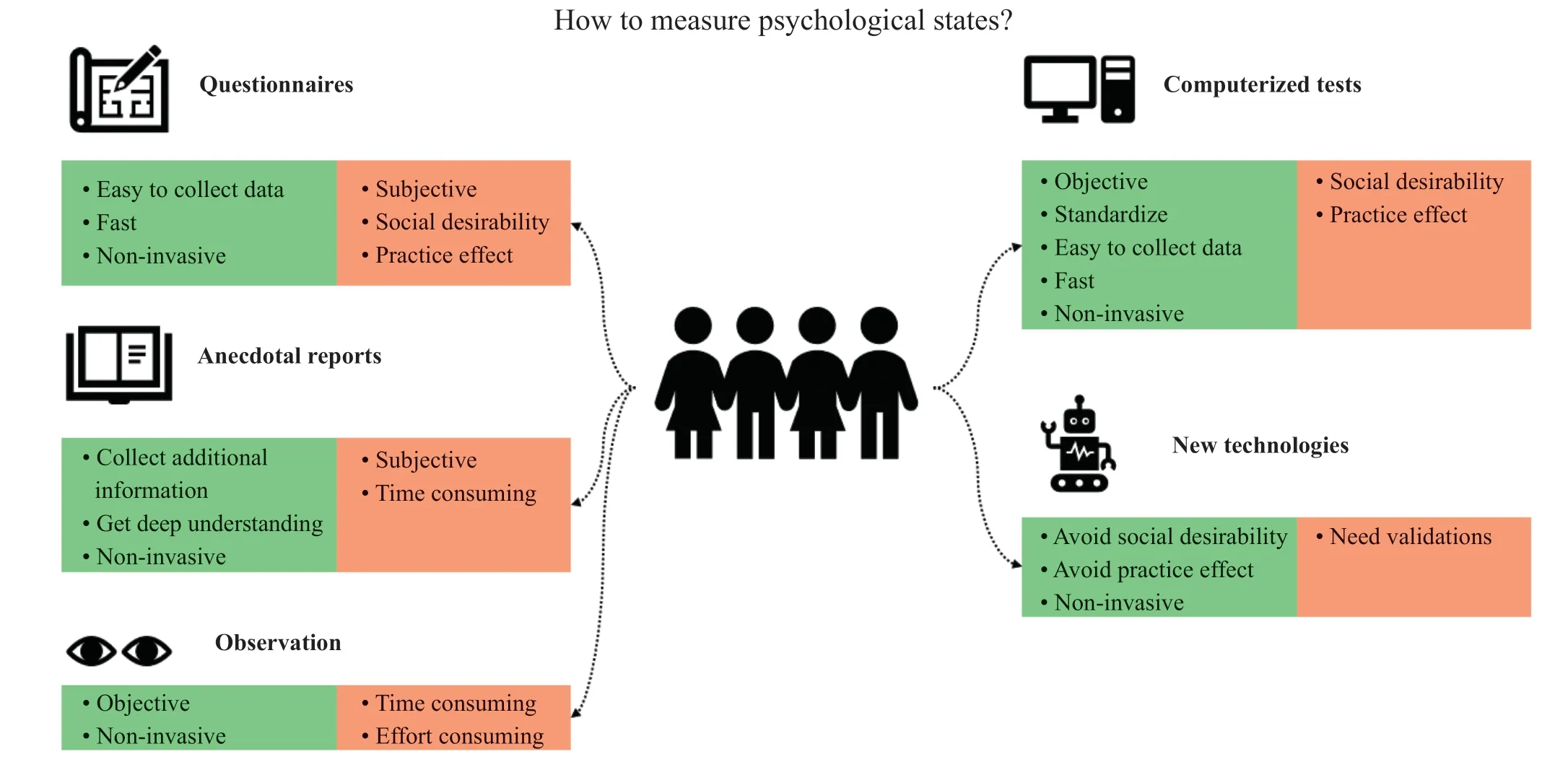
Figure 2 Method of assessing crew members’ psychological states during challenging missions
The mental state of crew members is routinely documented via self-reporting questionnaires.Moreover,because missions involve more and more complicated tasks such as scientific experiments,the performance of crew members is tested via computerized tests which assess their cognitive functions and psychomotor skills.Researchers also use interviews and anecdotal reports to collect additional information or deep understanding such as on the background of crew members or their unique feelings that would not be included in the structural questionnaires.However,all these assessment results may be biased due to influence of social desirability and practice effects.
Observation is another way in which researchers code the behavior of crew members such as facial expressions,interactions,and voice communications[9–11].Observation is objective as it is documented by others,but it takes time to code and analyze after experiments which is a disadvantage for recognizing early abnormal signs in time.
Recently,researchers also used new technologies such as voice analysis[12],auto-recognition of facial expression[13],motion capture and machine learning[14].For example,MA and colleagues found that by using Kinect and Gaussian process regression,the joint motion information can predict mental fatigue.This method is also validated when people are in a bodyweight support situation[15].
4 PSYCHOLOGICAL ISSUES DURING CHALLENGING MISSIONS
4.1 The Right Staff for Participating Challenging Missions
To ensure the success of a mission,an important prerequisite is to select suitable crew members.There are two stages for selecting the right staff.In the first stage,the main aim is to identify and select out individuals who cannot pass physiological and psychological tests.In the second stage,the main aim is to select individuals who are expected to meet challenges during missions and can be part of a compatible team[1,16].
Based on previous research,a crew member may have traits in his or her personality related to coping with stress and challenges,instrumental and expressive traits,good motivation,strong cognitive and psychomotor capabilities,an ability to work independently but also integrated into the team,with cross-cultural competence[1,16].However,one should balance the selection characteristics because the “right staff” standards for short-term missions might be different,even completely different,from those for long-term missions.For example,individuals who are recruited for a short-term missions may have well-arranged intense,and high workloads.However,for those individuals who are recruited for long-term missions,may have to adjust themselves to excess free time.One should also balance the selection characteristics of independence and interpersonal relationships.An individual who has high goal-seeking and achievement motivation may be suitable for working in isolated and confined environments.However,two individuals with this characteristic may have difficulty in working as a team in these environments.
4.2 Mood States and the Third-quarter Phenomenon
What to expect when crew members have to spend a long time in isolated and confined environments? Unsurprisingly,researchers found crew members reported negative mood states in the extreme environment,such as tension,anger or fatigue[1].More importantly,the peak of negative mood states always appears at the third stage of a mission,which is termed the “third-quarter phenomenon”[1,17].However,along with increased and various social support and reasonable work arrangements,the chances of a significant rise in mood disturbance can be gradually decreased[18].For instance,in an experiment that simulating a space journey to Mars (Mars-500),researchers did not find significant dysfunctional mood reaction,reflected by consistently low scores of tension-anxiety,depression-dejection,anger-hostility,confusion-bewilderment and fatigue-inertia[19].Similarly,in three simulation studies where Chinese crew members stayed in isolated and confined chambers for 105 days (Lunar Palace I,the first experiment)[20],180 days (CELSS-180)[11]and 370 days (Lunar Palace I,the second experiment)[6]respectively,researchers did not find significant mood variations across experiments.For example,all participants in the 105 days Lunar Palace I reported low and stable scores of negative mood states,as well as a high vigor (Figure 3a)[21].

Figure 3 Profile of the crew members’ mood states on the group and individual levels,which is measured by the Profile of Mood States questionnaire
Lacking fluctuant at the group level does not mean individuals will not experience mood variations.In fact,significant individual differences appeared during these experiments[20,6]but might be coved by the average.For instance,as shown in Figure 3b,crew member A reported a high but decreasing mood disturbance across the experiment,whereas crew members C and D reported stable mood disturbances[20].These trajectories indicated the importance of monitoring mood states at the individual level.
Also,as noted in section 2,crew member mood states were frequently measured by self-reported standardized questionnaires.However,when we observed the behavior of crew members,we do find behavioral signs of their disturbance.By recording and coding videos of the daily actions and interactions in Mars-500 and Lunar Palace I of crew members,researchers found that negative mood states were significantly correlated with interpersonal communications[9,11,22].For example,WU and his colleagues found that depression and confusion of crew members could be reflected by the frequency of their facial expressions such as smiles and laughs during lunchtime[11].Also,the frequency of the verbal interaction with visual contact of crew members showed a drop during the third stage of the experiment[11].This may indicate that although crew members did not report or even recognize their negative experiences,their behaviors told others about their feelings.Another piece of evidence came from CELSS-180.In CELSS-180,there is a Marssol phase where crew members had to experience 24 hours 40 minutes circadian rhythm.In this special phase,crew members showed a higher risk-taking tendency than when they kept a normal Earth 24-hour circadian rhythm.Specifically,they tended to pump a balloon more,even though they knew this would increase the chance of a balloon explosion and,therefore,loss of all monetary rewards.
4.3 Group Interaction
In addition to studying how individuals adapt to isolated,confined,and extreme environments,researchers also focused on group cohesion which is one of the most critical factors for mission safety and success.There are several issues that may impair group cohesion,including but not limited to personality conflicts,career motivations,life experiences,interpersonal tensions,gender,cultural,social,and language differences. Most of these issues are not specific to space or simulation missions,they can be found in every normal group.However,unlike other normal groups or working teams in our daily life,it is difficult for crew members in missions to find a way to escape the group or change their work.Confined not only in small chambers but also in a small and fixed group may amplify the effects of these negative issues.
There are two questionnaires,work environment scale(WES) and group environment scale (GES),that are frequently used to measure group dynamics in isolated,confined,and extreme environments (See Table 1 for an overview of these two scales)[23,24].By filling in these questionnaires,researchers can track how crew members perceived their group and work environments in long-term missions,hence,enabling support andcountermeasures when needed.
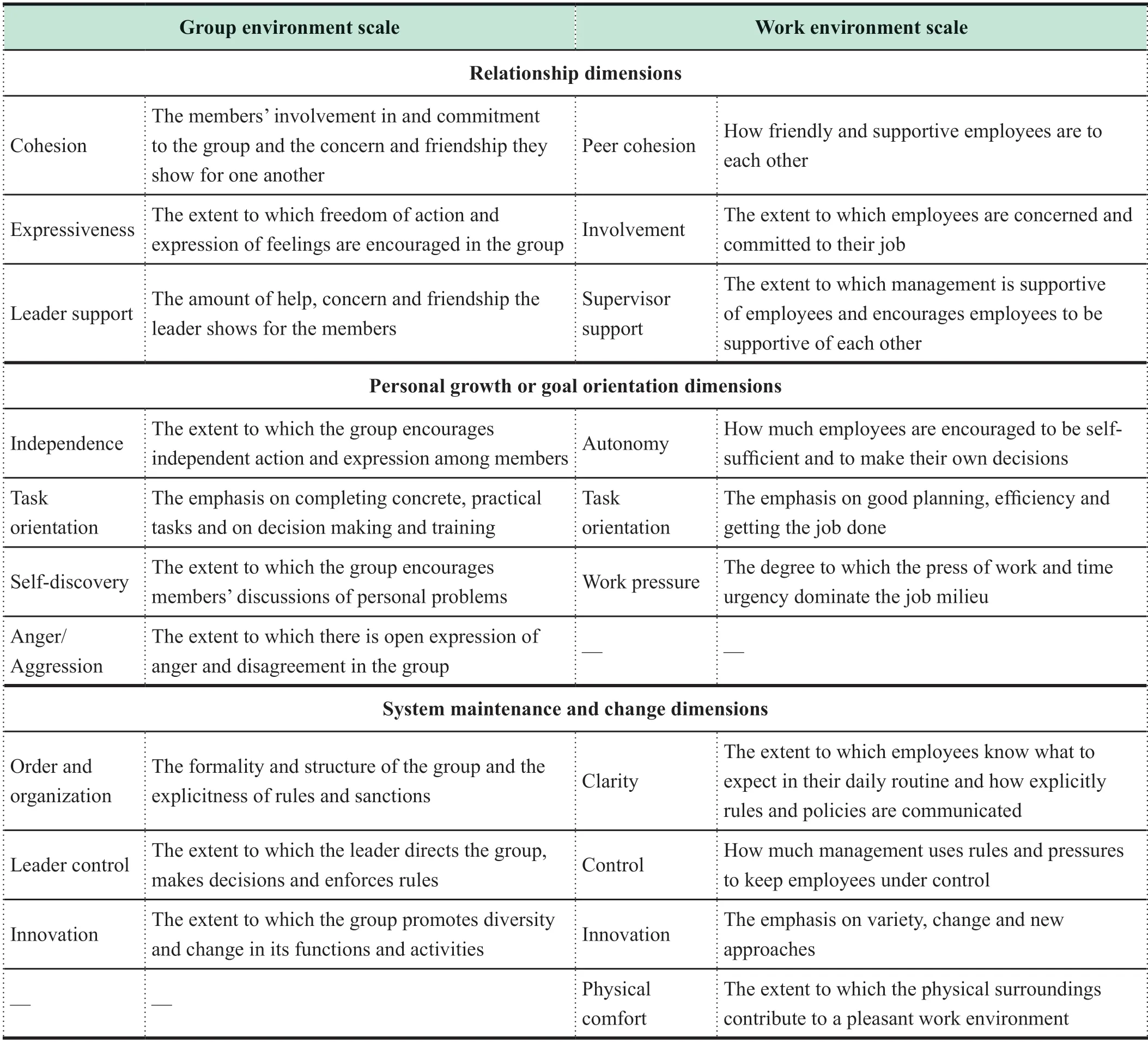
Table 1 Definitions of subscales in group and work environment scale
Overall,in long-term missions,crew members maintained a generally high and stable perception of group cohesion[21,25].However,individual differences in work and group perceptions should not be ignored (and these differences may be the sources of conflict).One factor that potentially impairs group cohesion is personality conflicts.For example,in Lunar Palace I,there are significant individual differences across WES and GES.One crew member felt less explicit about rules and policies in the group,he also felt constrained (less independent) in the group.This low perception may reflect this crew member’s highlighted openness in his personality[21].
A leadership role is also a key factor for group cohesion.There are two types of leadership roles within groups.One type of leadership is related to a supportive role.A supportive leader focuses on emotions,morals,and interpersonal activities.Another type of leadership is related to a task role.A task-related leadership role focuses on finishing work efficiently.A leader can use both roles during a mission[1].Research showed that supportive leadership is positively correlated to group cohesion[1,21,25].Also,the increased supportive leadership contributed to an increased perception of the explicitness of rules and sanctions and decreased feelings of anger and aggression[25].Although there is less evidence to show that task-related leadership has a significant relationship with group cohesion[1,21,25],it is not surprising that a leader with a focus on efficient work could increase crew members’ perception of task orientation[25].
In addition to the “in-group” relationship,crew members have to cope with an “out-group” relationship between themselves and another group,that is personnel from the outside mission control.Research from space and simulation missions showed that crew members may transfer their negative emotions to personnel outside their environment when they cannot directly express their emotions within a small and unchangeable team,which is called displacement[1].From another perspective,if crew members can get support from outside Mission Control,these supportive’s resources may help them to cope with challenges[26].In Lunar Palace I,researchers found that supervisor support significantly decreased negative mood states crew members felt and released their work pressure during long-term isolation and confinement[21].
Researchers have addressed the importance of gender and minorities across crew members[27,1].Recently,researchers also noticed the professions of crew members also play a critical role in group cohesion[25].Different work requires different interpersonal dynamics.For example,an occupation that requires work with machines or cultivating plants may have low requirements for interpersonal interactions.However,occupations like medical support require a high level of support from others to complete their own work.
5 PERSONAL GROWTH DURING CHALLENGING MISSIONS
We discussed how stressors in isolated,confined,and extreme environments affect crew members’ psychological states.However,most crew members reported that they were eager/willing to participate more than once in these experiments.This indicated that participating in these challenging missions can also have positive effects.
Researchers studied personal values because these values can guide people in understanding and in reacting to others’behaviors.Schwartz and his colleagues proposed 10 universal personal values,which can be categorized as social interest and personal interest.Social interest highlights how crew members relate to others whereas personal interest focuses on how individuals express their own interests and characteristics (details see Table 2).Accumulating evidence showed that Western crew members who had participated in simulation missions shared common emphases on self-direction,stimulation,universalism and benevolence[28–30].Importantly,researchers found that crew members cherished independent thought and self-exploring more along with the time course of isolation and confinement[29].In two missions with Chinese crew members,researchers found that they emphasized social interest more,including benevolence,universalism and security.Moreover,researchers also found crew members showed an increased emphasis on personal interest,including hedonism and achievement during challenging missions[8,31].Taken together,these studies showed that crew members shared ranked values across cultures,but they also adjust their personal values to adapt to small groups in an isolated,confined and extreme environment.Note that when crew members adapt to their challenging missions,they may show diversity in their own adaptation.For example,some crew members may emphasize more on independent thoughts[30],and others may cherish more on pleasure or sensuous gratification for themselves[31].
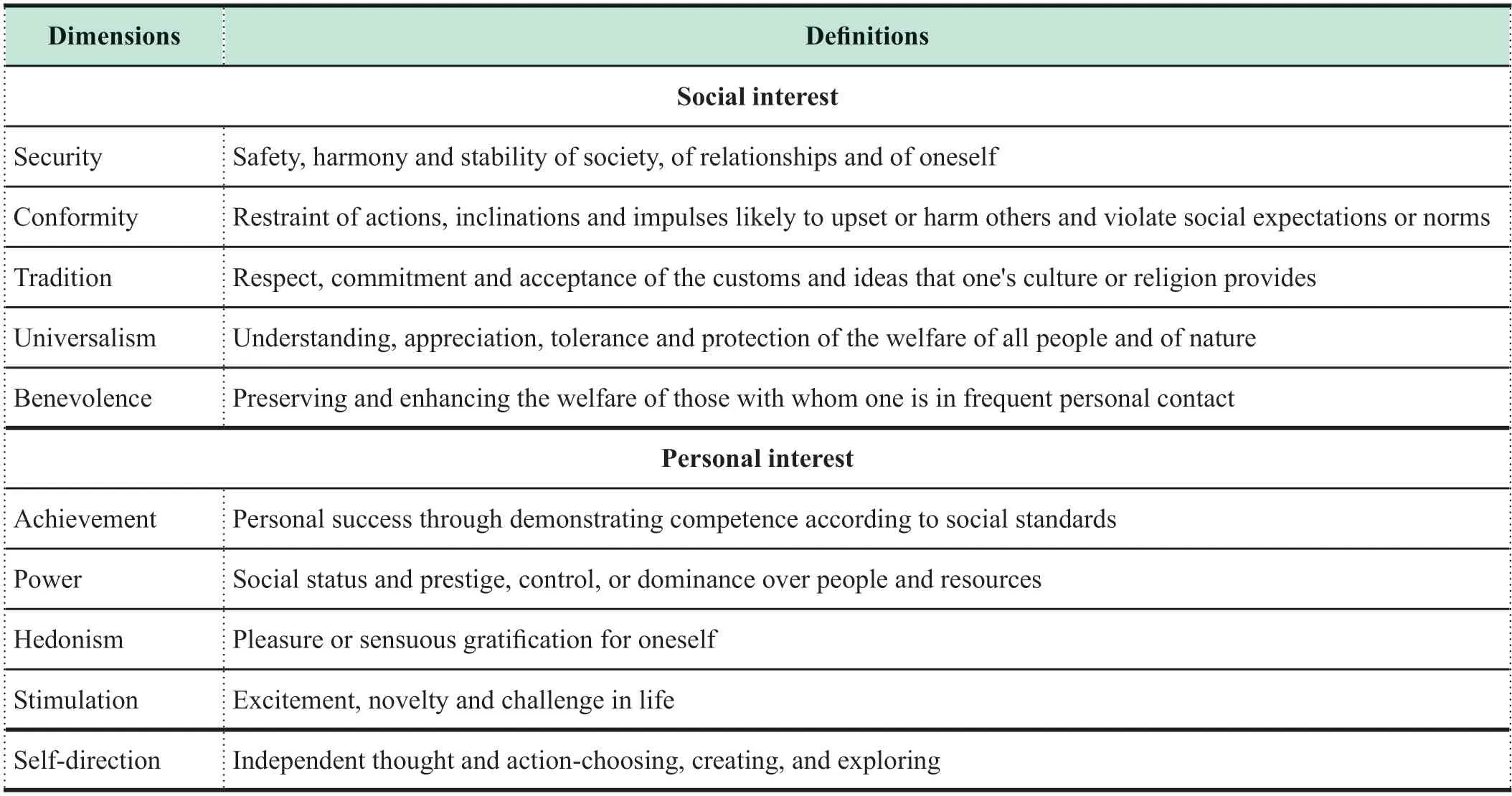
Table 2 Definitions of personal growth and personal values
In these missions,crew members not only showed theirpersonal growth,they also had their own growth on an interpersonal level.As we mentioned in the previous section,living and working in a small group requires smooth social relationships.Being in these experiments,crew members all reported that they had a better relationship with others,and they valued relationships with others,no matter how long these simulations took (e.g.,from 17 days in SIRIUS-17 to 520 days in Mars-500)[31].
6 FUTURE DIRECTIONS
During long-term space missions and simulation missions,psychological issues which may affect mission success have been identified by accumulating evidence.Also,positive psychological growth from participating in challenging missions has also been identified.As humans have been prepared for interplanetary missions,such as exploring Mars there are a number of issues that we should investigate in the future.
Selecting and training the appropriate staff is fundamental for a mission success.Researchers should be aware that crew members who will participate in long-term and long-distance journeys may be different crew member types than those who participate in missions now.For example,for interplanetary missions,crew members will have high autonomy and high independence as mission control cannot provide instruction in a timely manner.Therefore,compared with adapting heavy controls from outside personnel,crew members may have to adapt to monotony and autonomy.Also,in current missions,astronauts and cosmonauts always emphasized how they were impressed by the Earth’s beauty and fragility.However,in future long-distance explorations,crew members may have to deal with strong feelings when they cannot see the Earth anymore(termed Earth-out-of-view phenomenon[1]).
Until now,researchers mostly rely on self-report questionnaires and behavioral tests or observations.More fast and non-invasive techniques should be introduced to conduct space psychology.In this way,we can monitor the crew members’psychological states even on-line without much disturbance.Also,researchers should keep in mind that there are close relationships between psychological and physiological states.For example,diffusion tensor imaging results showed that crew members in Mars-500 had significant fractional anisotropy reduction in their right temporal-parietal junctions,in which the cerebral area that is known for inferring people’s social intentions[32].This indicates that being in isolated and confined environments may temporarily change our brain structures.From another perspective,these brain changes could be an explanation for changing feelings or behaviors crew members experience during missions.
One important factor that researchers should keep in mind is that research for space exploration always will have an impact in our daily life.For example,findings or countermeasures used for supporting crew members in isolated and confined environments can also be used in quarantine.Similarly,psychological and physiological training for head-down bed rest experiments can also be used for supporting patients who are also confined on the bed.
Overall,this review aims to introduce psychological issues during space exploration and ground simulation missions.During these challenging missions,the isolated and confined environment and the small and fixed group may cause negative psychological experiences.Nevertheless,successfully completion of these missions could lead to personal and interpersonal growth.In future space exploration,psychological challenges during these missions should be identified and crew members should be trained beforehand to reduce their impact.
杂志排行
Aerospace China的其它文章
- Kinetica-1 Carrier Rocket is Preparing for Launch
- CASC Released Blue Book of China Aerospace Science and Technology Activities in 2022
- Design and Application of Cloud Test Platform for Launch Vehicle Electrical System Based on Data-Driven Approach
- Research on Key Technologies for Reusable Liquid Rocket Engines
- Development Status and Prospects of Solid Rocket Motor Technology for Large Launch Vehicles
- Development Status and Main Application Progress of the Kinetica-1 Solid Launch Vehicle
